This month, we will be exploring medieval stumpwork. But before we start: happy birthday to me! I just celebrated my 47th birthday in style at my local bakery with a piece of King Ludwig Cake (royal chocolate cake). We are in Bavaria after all :). And now, on to the medieval stumpwork. We’ll kick off the series with a beautiful chasuble from the treasury of Merseburg Cathedral in Germany.
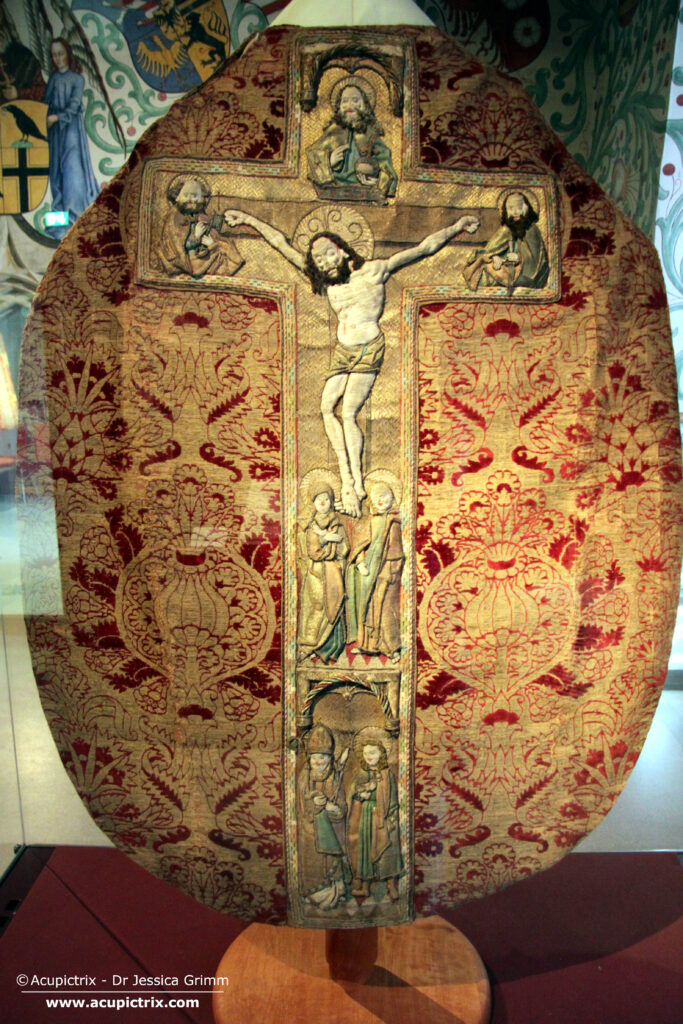
The lighting levels in this part of the exhibition were relatively low, and my pictures did not turn out as well as I had hoped. Still, you will get an impression of the beautiful stumpwork embroidery on this chasuble cross. The embroidery dates to the last quarter of the 15th century and was probably made in Central Germany. As Merseburg lies within this area and was an important town around that time, the embroidery may have been produced in a local workshop.
The stumpwork chasuble cross depicts the Crucifixion, with St. Peter on the left, God the Father above, and St. Paul on the right. Below the cross stand Mary and St. John. The orphrey panel below the central scene shows a bishop with a pair of tongs holding, what appears to be, a tongue. This is St. Livinus. The guy next to him is holding a rooster and can thus be identified as St. Vitus.
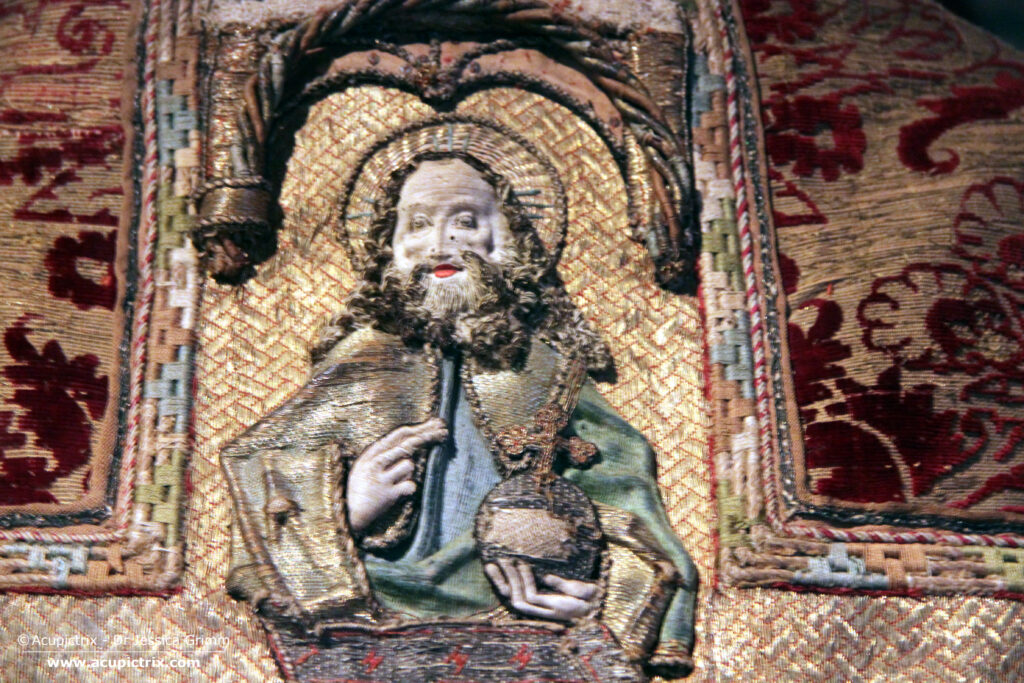
The background of the embroidery consists of an open basket weave diaper pattern in red stitched on linen. The orphrey is framed by a string-padded basket weave pattern made with coloured spun silk. This, in turn, is edged with a twist made of red and white silk. The outermost ‘layer’ of the frame consists of a red silken ribbon and a silver braid (oxidised to black). The diverse materials in only the orphrey frame show us that this was an expensive piece of embroidery.
The stumpwork canopy above God the Father consists of a twisted rope made of iron wire wrapped with linen and then silk. The vault is a piece of redish silk embellished with gilt spangles.
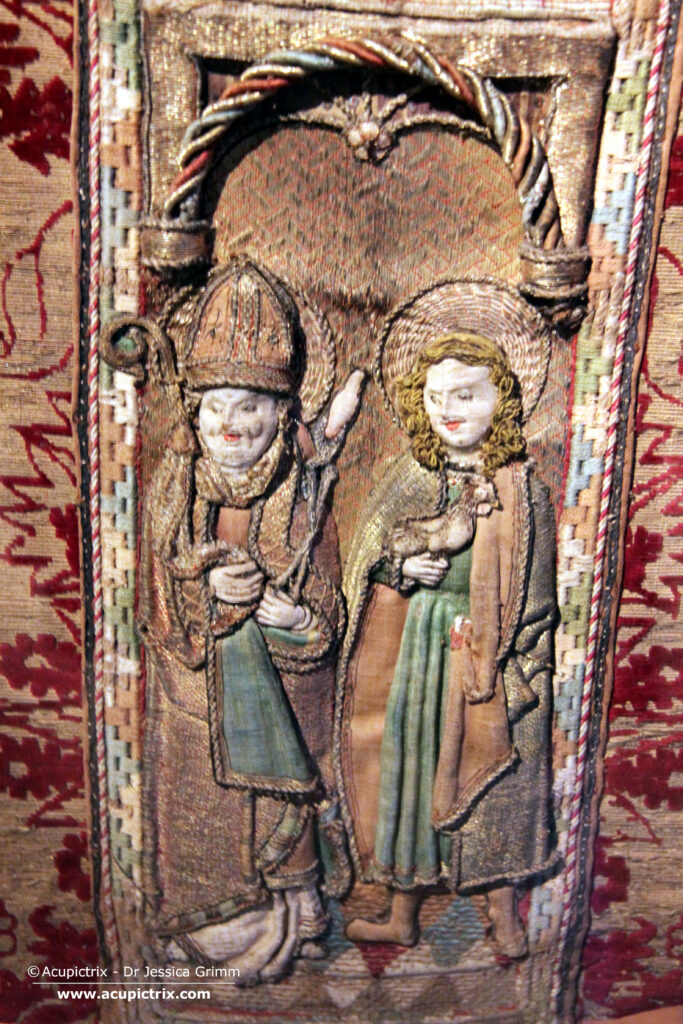
The figures themselves were stitched separately on linen. They consist of multiple slips that were padded and attached to the linen background. Some of the faces have rather sharp features (e.g., God the Father), while others seem to be made of something less firm (Mary and St. John). This might suggest that more than one embroiderer worked on the figures. The literature states that the noses are made of a piece of wood. The whole face is covered with pink silk fabric. The facial features are embroidered in silk. The hair is made of silk-covered wire turned into curls.
The hands are made from wire and/or linen string covered with silk. The fingers are then stitched in with silk. The undergarments are made of pieces of silk fabric. The mantles are made of slips of couched gold work. The couching pattern is a simple bricking pattern in a coloured couching thread. This is not or nué. As the whole bodies are padded with string and pieces of sturdy linen, or nué is not needed for shading effects.
Whilst most of the above techniques are well understood and can often still be found in modern stumpwork, the making of the faces eludes me. As they are firm to the touch, how do you embroider the facial features on them? Is that done before the silk covers the core? How do you ‘calculate’ the distortion? Trial and error? And why does the silk not wrinkle? Silk isn’t stretchy as far as I know. And what is in these faces besides a piece of wood for the nose? At some point, I will need to start experimenting to see if I can develop a technique that produces these unique stumpwork pieces.
Literature
Heise, K., H. Kunde & H. Wittmann (eds), 2004. Zwischen Kathedrale und Welt – 1000 Jahre Domkapitel Merseburg, Michael Imhof Verlag, Petersburg.
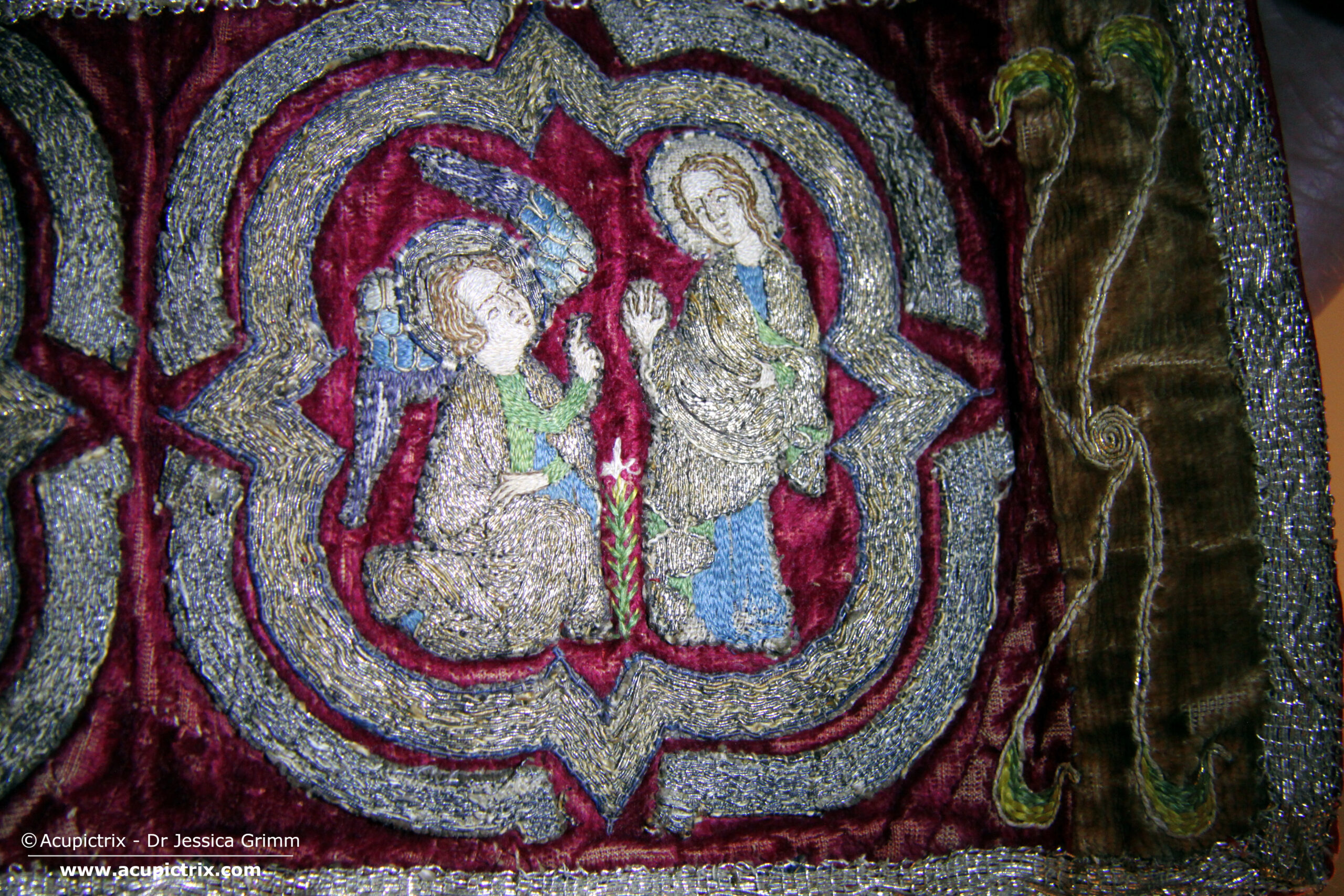
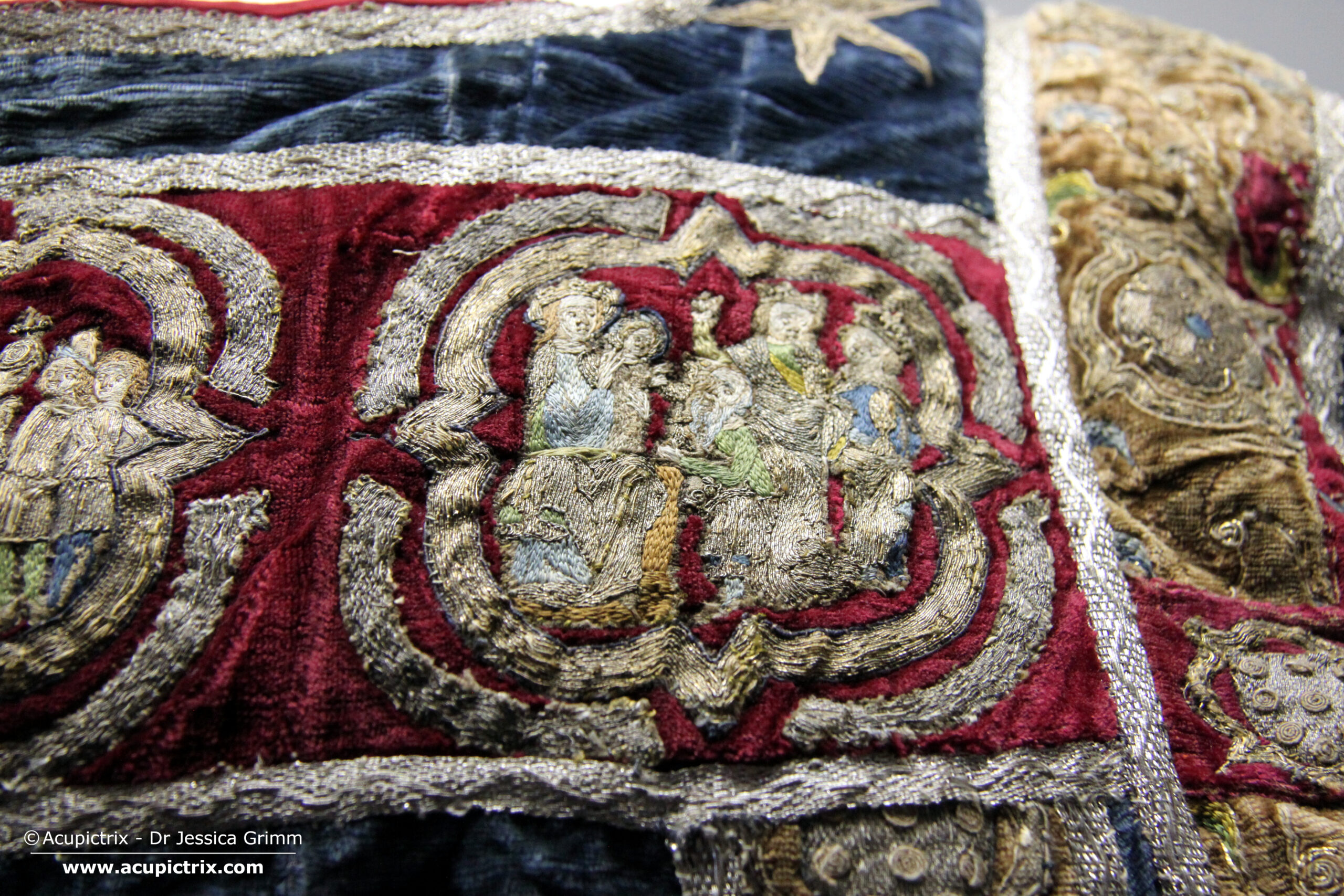
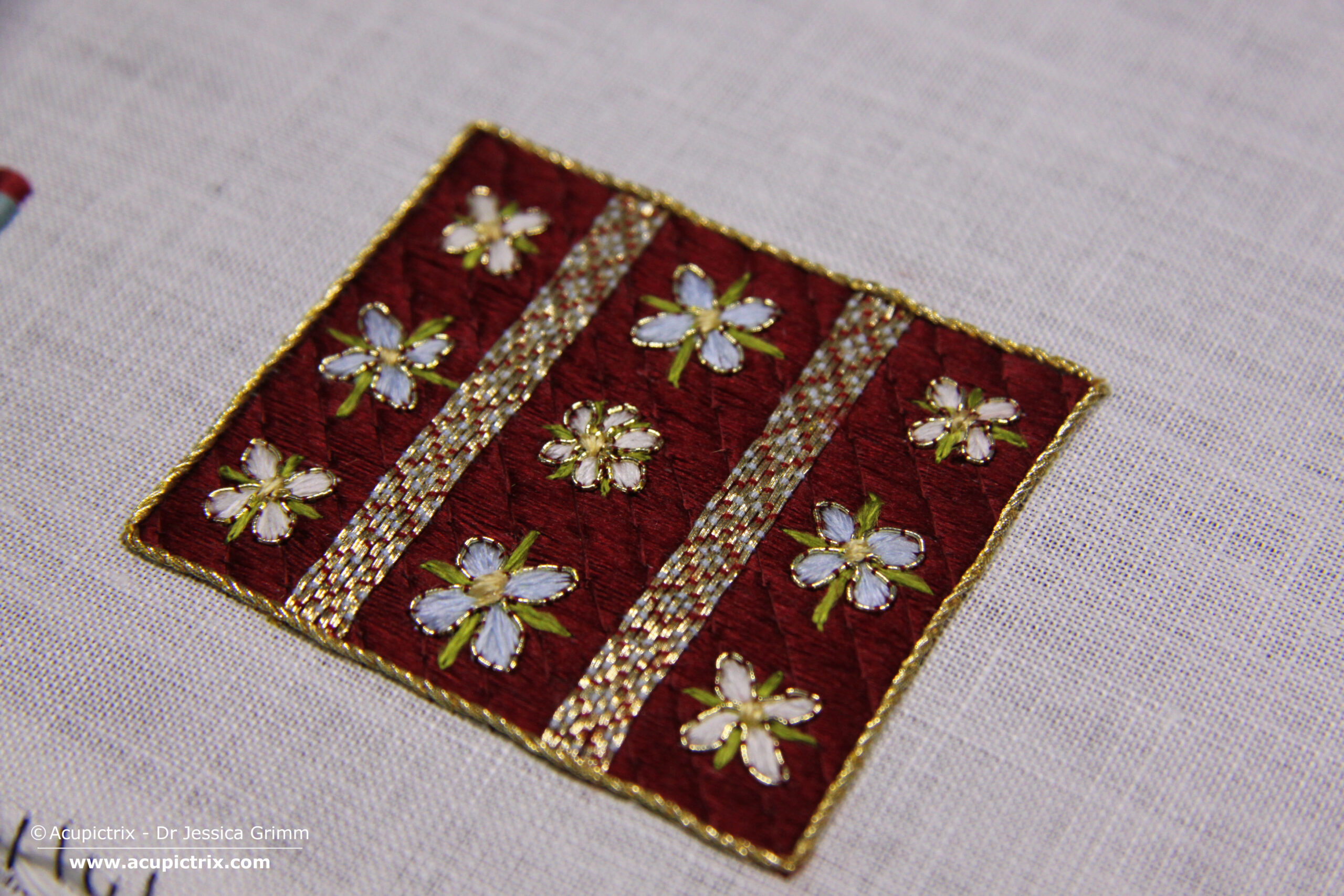
6 Comments
Debbie · 7. July 2025 at 14:47
Wishing you a very Happy Birthday ! 💐x
Dr Jessica Grimm · 8. July 2025 at 12:05
Thank you, Debbie!
Beth · 7. July 2025 at 16:35
Happy birthday Jessica!
The detail on the faces is amazing. There must be more under there than padding and wooden noses.
Dr Jessica Grimm · 8. July 2025 at 12:05
Thank you Beth! Yes, that’s what I am thinking too. Some sort of paste made from scraps of fabric and glue, maybe?
Lela Popp · 14. July 2025 at 23:03
I wonder if the face is stitched on the silk fabric on the bias rather than the straight of grain. This would give the silk more stretch to cover a wood mold or a layered sculpted felted wool base. A wood nose could be glued to a wool base. The bais fabric could be layed over the face mold before stitching to determine placement of the eyes and mouth.
Dr Jessica Grimm · 15. July 2025 at 7:24
Yes, using the stretch of the bias is a good idea! As far as I know, there’s no wool or felt in any of these. It is never mentioned in the literature.